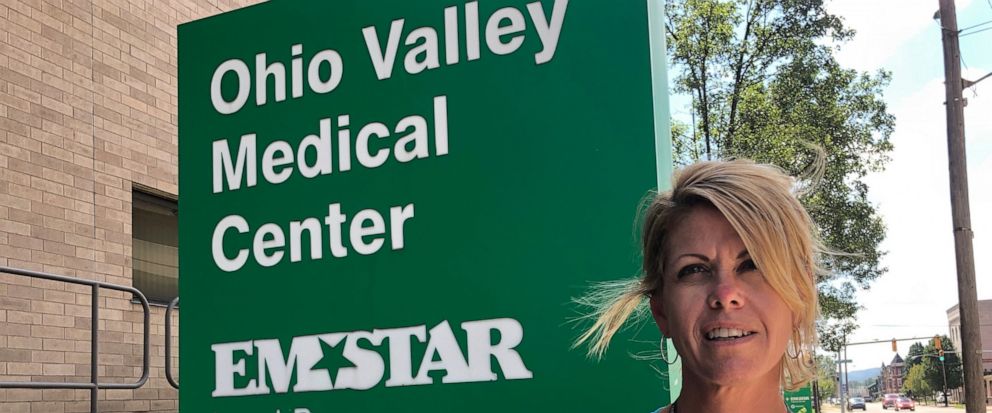Carrie Jones is looking for work for the first time in two decades. She’s even more worried about what will happen to her psychiatric patients. “Where are they going to go?” Jones said. “We’re honestly like their family.”
Jones is among nearly 1,100 employees being laid off at Ohio Valley Medical Center in Wheeling and sister facility East Ohio Regional Hospital in nearby Martins Ferry, Ohio.
The layoffs are the latest blow to a region on the edge of the Rust Belt that hasn’t fully benefited from the economic recovery that President Donald Trump — who attended a private campaign fundraiser in Wheeling in July — has touted. The area had managed to hang on after steel mills and other manufacturing plants closed, in part by forging a new identity as a health care hub.
But after two years of ownership, Irvine, California-based Alecto Healthcare Services announced both hospitals will close by next month. The company cited several factors, including losses of more than $37 million since taking over, increasing facility improvement needs and the lack of a potential partner or buyer, including a cross-town hospital.
Acute and emergency admissions were suspended Wednesday night at OVMC, where workers held an emotional candlelight vigil just before midnight.
The Appalachian hilltop region’s economy has steadily eroded in recent decades, a trend forecasters expect to continue. Steel mills farther north were shuttered long ago. Aluminum and other manufacturing plants in Ohio left as well.
As the jobs went, so have residents. The population in the three-county area on either side of the river about an hour west of Pittsburgh has fallen steadily since the early 1980s, including a 5.3 percent drop from 2010 to 2018.
Powered by a natural gas fracking boom, employment rebounded after the Great Recession. But a 2018 report by West Virginia University researchers said the area would need “a significant positive economic shock” to halt long-term declines.
North of Wheeling, a natural gas-fired power plant is planned on a reclaimed coal strip mine but would create only 30 permanent jobs. In Ohio, a petrochemical plant proposed in Belmont County has languished in the planning stages for years.
A block away from OVMC, the 166-year-old Centre Market District is filled with restaurants and shops that cater to hospital workers and patients’ families. Some business owners said they will be affected by the hospital closing but are prepared to handle it.
A few miles east, Wheeling Hospital is one of the state’s top 10 private employers. In Ohio, three of Belmont County’s top employers are hospitals. Doctors who work at the two hospitals will be forced to go elsewhere.
Read the entire article here.

